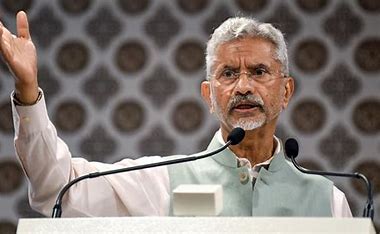
Parliament, in the Monsoon Session last year, passed three labour code bills—the Industrial Relations Code, Social Security Code and the Occupational Safety, Health and Working Conditions Code. Meanwhile, the Wage Code Bill, 2019 had been passed by the Parliament in 2019. The Wage Code Bill replaced four related legislations – the Payment of Wages Act, 1936, the Minimum Wages Act, 1948, the Payment of Bonus Act, 1965 and the Equal Remuneration Act, 1976. Addressing the Rajya Sabha after the passage of the Bill, Minister of State for Labour and Employment Santosh Kumar Gangwar had said in 2019, “The Code on Wages will ensure statutory protection for minimum wages and timely payment of wages to approximately 500 million workers in the organised and unorganised sectors. It will also do away with regional imbalances and wage variations with a floor wage to be determined by a “Tripartite Committee” comprising representatives of trade unions, employers’ organisations and state governments.”
Key provisions like making all categories of workers eligible for minimum wages, as against only 30% of the workforce being eligible at present, are indeed path-breaking. Minimum wages would be extended to the entire services sector, to domestic workers, unorganised workers and teachers, among others, to mainstream the informal sector. The Narendra Modi government pushed through these unprecedented reforms to make India a globally competitive manufacturing hub by passing the aforesaid labour codes to simplify India’s archaic and labyrinthine central and state-level labour laws. This would make it easier for foreign and Indian companies to conduct business activities in India without compromising on workers’ welfare in any way.
Prime Minister Narendra Modi has done what none before him could even dare to attempt. India’s labour market reforms will herald the dawn of a new era in making businesses more efficient, cutting down extra flab and allowing flexibility in hiring and retrenchment, making industrial strikes difficult, removing multiple licensing and paperwork and, of course, getting rid of disguised unemployment. Disguised unemployment is a scenario where employees are underutilised and therefore underpaid, as there is not enough work that can be allocated to them for various reasons.
India jumped 14 places to the 63rd position in the ease of doing business (EODB) rankings last year and by 79 positions in five years (2014-19). The Covid-19 situation has made the lives of both the employer and employee relatively difficult. Under these circumstances, these new labour codes are bound to make new enterprises investor friendly, increase ease of doing business and make it attractive to invite foreign entities which want to exit China. A key element of the proposed Social Security Code is to clearly define migrant workers and also enlarge the scope of the current scheme to cover the gig economy and those outside the organised sector, while recognising the emergence of online platforms and aggregators that provide access to workers. The bill has mandated the registration of all unorganised and gig and platform workers and the provision of insurance, maternity, creche and old age protection benefits. Industries and workers are two sides of the same coin and these three bills have tried to balance the rights and obligations of both employers and employees.
Besides, it has been proposed that companies with up to 300 workers be allowed to hire and fire workers without seeking prior government permission, as part of the Industrial Relation Code Bill, 2020. The earlier threshold had been up to 100 workers. Companies with more than 300 workers need to apply for approval, but if authorities do not respond to their request, then it will be deemed approved. Besides, as per the IR Code, a notice period of 60 days will have to be given by trade unions or employees before going on a strike. During the pendency of proceedings before a Tribunal or National Industrial Tribunal, and even 60 days after the conclusion of such proceedings, workers cannot go on a strike. Strike conditions have been applied to all industries. Currently, it is between two weeks and six weeks. This is a game-changing move that will discourage flash strikes and enhance productivity significantly.
Together, these four labour codes consolidate and reconcile more than 40 central labour laws and over 100 state laws on the subject that hitherto often contradicted each other, making labour compliance a nightmare for businesses operating across the country. For example, there was no universally accepted definition of “wage” across the country. This resulted in differences in interpretation, frequent litigation and a perverse incentive for industries to stay small to avoid onerous provisions that kick in with higher labour counts. The new labour codes, however, incentivise both small and large businesses and disincentivise the deliberate need to stay small.
Going forward, however, these four codes will replace the welter of federal and provincial laws. One of the major factors impeding India’s global competitiveness and hindering the entry of large global manufacturing companies looking for alternatives to China is India’s rigid, stringent and outdated labour laws. But successive Congress-led governments that ruled India for decades together never mustered the political will or courage to carry out the long overdue labour reforms, blinded by the jaded and outdated Nehru-Mahalanobis model, that was steeped in an incompetent, socialist mindset. Most Indian governments over the years have also shied away from trying to reform the labour markets because of opposition from labour unions and the political parties with which these labour unions are affiliated.
India, till recently, ranked 103rd out of 141 countries, according to the World Economic Forum (WEF), on the competitiveness of its labour market. The new labour codes address all labour related issues without cutting back on worker benefits in any way. Interestingly, a research paper by University of Kent economist Amrit Amirapu and Pennsylvania State University’s Michael Gechter found that India’s restrictive labour regulations are associated with a 35% increase in a company’s labour costs. Several onerous procedures apply to companies with 10 or more employees, which have given rise to the practice of businesses incorporating several companies, often benami and shell companies, just to report under 10 employees. This was amongst the main reasons for the high cost of compliance with India’s labour laws, including costs emanating from corruption. However, thanks to the tremendous determination, reformist mindset and courage of conviction of Prime Minister Narendra Modi, the new labour codes will curb corruption and cut through the swathe of unnecessary paperwork and compliances, thereby, incentivising entrepreneurship, among other things.
India under an inept Congress had watched from the sidelines as many contract manufacturers and western MNCs in China set up factories in the Philippines and Vietnam and even Bangladesh as India›s labour laws made it globally uncompetitive. For example, these countries have several export-oriented factories employing 10,000-plus workers each, in sectors such as garments, footwear, toys and jewellery. But investors were reluctant to set up such large factories in India, because labour law compliance costs alone would make them globally uncompetitive. The Modi government›s new labour codes, however, are expected to address these decade-old concerns to make India globally competitive and get the Indian industry, both domestic and foreign-owned, ready for a post-Covid world.
Another oft-repeated complaint against India was the prevalence of the so-called Inspector Raj—intrusive inspections by government officials that had become a tool to harass businesses and extract rent from them. The new codes address all these issues without cutting back on any worker benefits.
As part of its Aatmanirbhar Bharat push, the government has decided to encourage medium enterprises to grow in size. The bill also reflects the changing nature of the economy; the growth of the gig sector and the vulnerability of sections of workers, from migrant labourers to house helpers, who despite playing a crucial role did not fit into the traditional definition of a “worker”, will finally get their due now. The new proposed labour laws will amalgamate 29 existing labour laws and pave the way for simplifying laws and take welfare measures to India’s 50 crore workers, spanning the organised and unorganised sectors.
Some experts allege that the blanket exemptions to industries through various provisions will lead to social and economic unrest, promote contractualisation and take away job security and wage security. These allegations are baseless as, in many areas, fixed-term workers and regular workers will enjoy equal benefits. The Social Security Code also aims at universalising social security by bringing informal workers under its ambit. Henceforth, companies with less than 20 workers can voluntarily join EPFO to get social security benefits and internal workers will be free to voluntarily join the employee state insurance (ESI) scheme for getting healthcare benefits. The Code also talks about platform companies employing gig workers to make a provision of 1% to 2% of their profits for the social security needs of their workers.
People need not work continuously for five years to get gratuity benefits, according to the new Social Security Code bill. The Code has removed the mandatory minimum gratuity threshold of five years, while introducing a different threshold structure for various categories of workers. Regular and permanent employees will now have to work for at least five years to become eligible, while fixed-term or contractual workers will have no such limit. Instead, their gratuity payment will be linked to their tenure of work. For working journalists, the Code makes a provision to avail gratuity benefits after three years of service, and for seasonal workers, gratuity payments equivalent to the salary for seven days will be provided for every season of work. Earlier, the five-year gratuity payment was mandatory, which meant that millions of workers used to forfeit their gratuity deposits, the salary for 15 days for every year of work, if they resigned or lost their jobs before the stipulated period. However, the bill makes provisions such that if an employee is involved in damaging activities and/or has damaged property, his gratuity payment can either be adjusted against the damage or forfeited.
The new labour codes also do away with multiple licenses required under different central and state laws and provide for a single licensing mechanism and will, thus, improve the ease of doing business in India. The new Code also revamps outdated laws on industrial disputes by simplifying the adjudication procedures. This is expected to lead to early resolution of labour disputes.
Opposition parties like the Congress and the Left and leftist trade unions have objected to this Code, saying it will make it easier for employers to hire and fire workers but the law addresses this issue by providing for a reskilling fund to help train workers who may lose their jobs. This Code lays down the safety standards that have to be followed by different sectors and mandates the number of hours that employees can be made to work, specifies their leaves and other entitlements. More importantly, it recognises the rights of contract workers, also called fixed-term employees, and gives them the same benefits as regular workers in terms of social security benefits and wages.
The Code lays down an eight-hour work day for all workers and a maximum of six working days a week. Businesses wanting their employees to work more than eight hours a day will have to pay them overtime wages at twice the regular rate. This will be applicable to all units, regardless of size. By mandating companies to provide social security to contract workers, the law gives them an ample level of security. This will especially help the gifting, toy and furniture sectors. These sectors typically see a spike in demand in the run-up to the festive season and allow Indian companies to service the Christmas market in the US and in Europe and other parts of the world, without having to take on board workers for the full year. This crucial reform will allow Indian companies to henceforth hire fixed-term employees depending on seasonal demand.
The new labour codes specifically mandate the equality of women employees, who can now be engaged in all types of work in all businesses and are subject to health and safety considerations. They can work before 6 am and beyond 7 pm, but only with their express consent. In another woman-friendly measure, the law says that no business can employ a woman for six weeks following the delivery of a child, miscarriage or medical termination of pregnancy. In a path-breaking provision, this Code also mandates businesses to provide separate toilets and locker rooms for male, women and transgender workers. The fact that this law specifies safety standards that have to be followed by different sectors and mandates the number of hours that employees can be made to work is hugely empowering for workers. The new Social Security Code will replace nine Social Security laws, including the Employees’ Provident Fund Act, Employees’ Pension Scheme, Employees’ Compensation Act and Maternity Benefit Act, among others.
This Code brings workers in the unorganised sector as well as freelance workers, who are sometimes called gig or platform workers, into the ambit of social security coverage and mandates companies such as Uber, Ola, Zomato and others, to set aside 1-2% of their annual turnover in a social security fund, to be administered by the Government of India, for their workers. It also extends social security cover for agricultural workers for the first time and eases the conditions for payment of gratuity to employees, including those on fixed term contracts.
All employees will now have an offer letter and both the Centre and the States will create a database on migrant workers and offer them several benefits including the portability of the public distribution system and construction cess benefits. Prime Minister Narendra Modi’s groundbreaking labour laws have been envisaged by recognising the changes in the global scenario in a post-Covid world. The new labour codes seek to transform India and rid it of outdated technologies and methodologies. The reduction in compliance burden would also facilitate the expansion of establishments, helping to create jobs on a large-scale, across a plethora of segments and sectors, giving Prime Minister Modi’s transformational ‘Make in India’ vision a huge boost.
The writer is an economist, national spokesperson of the BJP and the bestselling author of ‘Truth & Dare: The Modi Dynamic’. The views expressed are personal.















